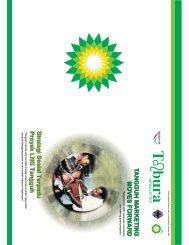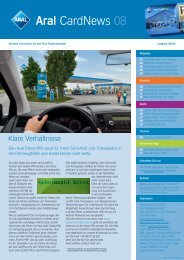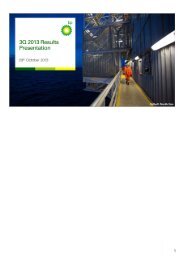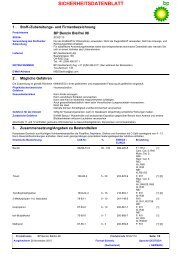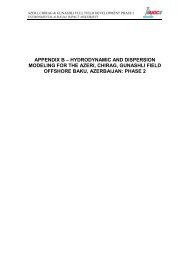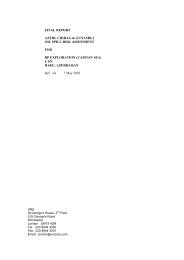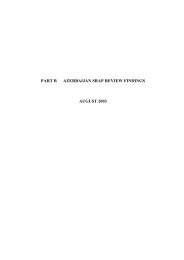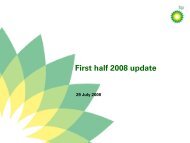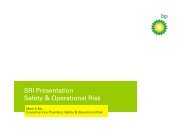- Page 1 and 2:
Don FieldDecommissioningProgrammeDO
- Page 3 and 4:
Don Field Decommissioning Programme
- Page 5 and 6:
Don Field Decommissioning Programme
- Page 7 and 8:
Don Field Decommissioning Programme
- Page 9 and 10:
Don Field Decommissioning Programme
- Page 11 and 12:
Don Field Decommissioning Programme
- Page 13 and 14:
Don Field Decommissioning Programme
- Page 15 and 16:
Don Field Decommissioning Programme
- Page 17 and 18:
DON-BP-001Don Field Decommissioning
- Page 19 and 20:
DON-BP-001Don Field Decommissioning
- Page 21 and 22:
Don Field Decommissioning Programme
- Page 23 and 24:
Don Field Decommissioning Programme
- Page 25 and 26:
Executive SummaryMay 2011 2-5Table
- Page 27 and 28:
Don Field Decommissioning Programme
- Page 29 and 30:
Don Field Decommissioning Programme
- Page 31 and 32:
Don Field Decommissioning Programme
- Page 33 and 34:
DON-BP-001Don Field Decommissioning
- Page 35 and 36:
DON-BP-001Don Field Decommissioning
- Page 37 and 38:
DON-BP-001Don Field Decommissioning
- Page 39 and 40:
Don Field Decommissioning Programme
- Page 42 and 43:
Descriptions of Items to be Decommi
- Page 44 and 45: Don Field Decommissioning Programme
- Page 46 and 47: Don Field Decommissioning Programme
- Page 48 and 49: Don Field Decommissioning Programme
- Page 50 and 51: Don Field Decommissioning Programme
- Page 52 and 53: Don Field Decommissioning Programme
- Page 54 and 55: Don Field Decommissioning Programme
- Page 56 and 57: Don Field Decommissioning Programme
- Page 58 and 59: Don Field Decommissioning Programme
- Page 60 and 61: DON-BP-001Don Field Decommissioning
- Page 62 and 63: DON-BP-001Don Field Decommissioning
- Page 64 and 65: DON-BP-001Don Field Decommissioning
- Page 66 and 67: Don Field Decommissioning Programme
- Page 68 and 69: DON-BP-001Don Field Decommissioning
- Page 70 and 71: DON-BP-001Don Field Decommissioning
- Page 72 and 73: Don Field Decommissioning Programme
- Page 74 and 75: DON-BP-001Don Field Decommissioning
- Page 76 and 77: DON-BP-001Don Field Decommissioning
- Page 78 and 79: DON-BP-001Don Field Decommissioning
- Page 80 and 81: DON-BP-001Don Field Decommissioning
- Page 82 and 83: DON-BP-001Don Field Decommissioning
- Page 84 and 85: DON-BP-001Don Field Decommissioning
- Page 86 and 87: DON-BP-001Don Field Decommissioning
- Page 88 and 89: DON-BP-001Don Field Decommissioning
- Page 90 and 91: Don Field Decommissioning Programme
- Page 92 and 93: Don Field Decommissioning Programme
- Page 96 and 97: DON-BP-001Don Field Decommissioning
- Page 98 and 99: DON-BP-001Don Field Decommissioning
- Page 100 and 101: DON-BP-001Don Field Decommissioning
- Page 102 and 103: DON-BP-001Don Field Decommissioning
- Page 104 and 105: DON-BP-001Don Field Decommissioning
- Page 106 and 107: DON-BP-001Don Field Decommissioning
- Page 108 and 109: DON-BP-001Don Field Decommissioning
- Page 110 and 111: DON-BP-001Don Field Decommissioning
- Page 112 and 113: DON-BP-001Don Field Decommissioning
- Page 114 and 115: DON-BP-001Don Field Decommissioning
- Page 116 and 117: DON-BP-001Don Field Decommissioning
- Page 118 and 119: DON-BP-001Don Field Decommissioning
- Page 120 and 121: DON-BP-001Don Field Decommissioning
- Page 122 and 123: DON-BP-001Don Field Decommissioning
- Page 124 and 125: DON-BP-001Don Field Decommissioning
- Page 126 and 127: DON-BP-001Don Field Decommissioning
- Page 128 and 129: DON-BP-001Don Field Decommissioning
- Page 130 and 131: DON-BP-001Don Field Decommissioning
- Page 132 and 133: DON-BP-001Don Field Decommissioning
- Page 134 and 135: Don Field Decommissioning Programme
- Page 136 and 137: DON-BP-001Don Field Decommissioning
- Page 138 and 139: DON-BP-001Don Field Decommissioning
- Page 140 and 141: DON-BP-001Don Field Decommissioning
- Page 142 and 143: DON-BP-001Don Field Decommissioning
- Page 144 and 145:
Don Field Decommissioning Programme
- Page 146 and 147:
Don Field Decommissioning Programme
- Page 148 and 149:
DON-BP-001Don Field Decommissioning
- Page 150 and 151:
DON-BP-001Don Field Decommissioning
- Page 152 and 153:
Don Field Decommissioning Programme
- Page 154 and 155:
DON-BP-001Don Field Decommissioning
- Page 156 and 157:
Don Field Decommissioning Programme
- Page 158 and 159:
Don Field Decommissioning Programme
- Page 160 and 161:
DON-BP-001Don Field Decommissioning
- Page 162 and 163:
Don Field Decommissioning Programme
- Page 164 and 165:
Don Field Decommissioning Programme
- Page 166 and 167:
DON-BP-001Don Field Decommissioning
- Page 168 and 169:
Don Field Decommissioning Programme
- Page 170 and 171:
Don Field Decommissioning Programme
- Page 172:
Don Field Decommissioning Programme




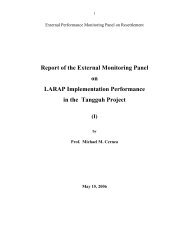
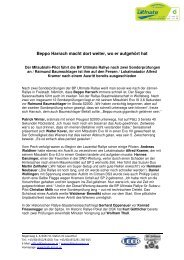
![[PDF] Deepwater Horizon: Accident Investigation Report - BP](https://img.yumpu.com/51697031/1/190x245/pdf-deepwater-horizon-accident-investigation-report-bp.jpg?quality=85)
